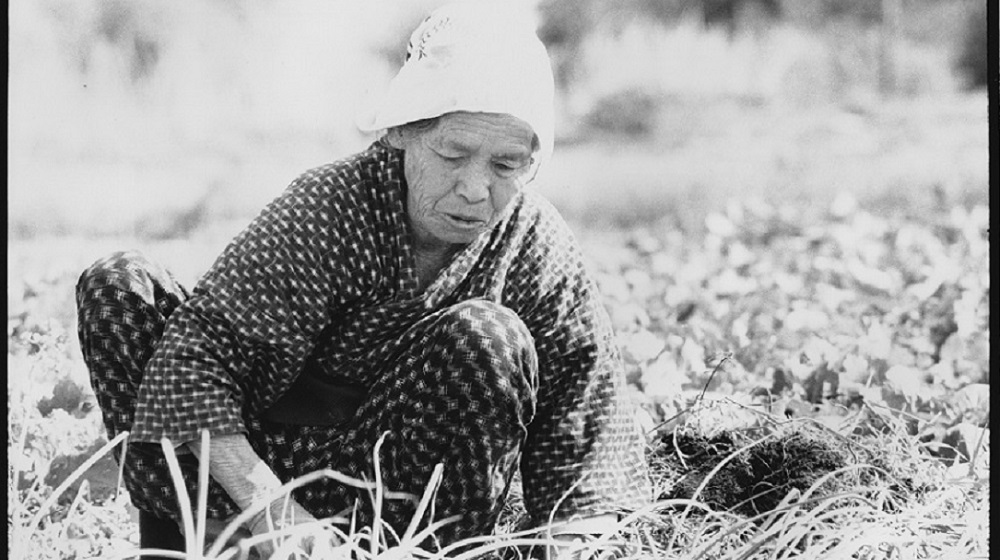A Grasscutter’s Tale (草とり草紙) is a portrait of Katsu Someya, an 86-year-old woman born in 1899, whose house is located next to Narita airport runway, on land that was confiscated and sold to expand the airport in a second phase. She lives there alone, separated from her family by her own choice, refusing to give up her land, and spends her time farming, weeding daily and working in a pickle factory. The stories of her life, told and repeated, trace decades of this woman’s personal experience of resistance. Her story is intertwined with the struggles for land and the rights of the farmers of Sanrizuka in the face of the construction of the airport.
The film, shot in 8mm over three years, is structured in 19 chapters and edited according to the rhythms of Someya’s telling. It explores the disjunctive structure of this woman’s words and memory through an original montage of sound and image. It was later blown up to 16mm to be able to print Japanese subtitles on the film with Someya’s words. Fukuda’s partner, Yukie Hatano, produced the film and made the title cards that announce the 19 sections and the photographs that we will show before the film.
A Grasscutter’s Tale marked a change in Japanese documentary practice and method, and even in its relationship with politics, by focusing on small everyday gestures and placing greater emphasis on personal stories. The film had a great influence on the filmmakers who followed in Fukuda’s footsteps, including Makoto Satō and Haruka Komori.
To introduce the session, programmer Ricardo Matos Cabo will give an illustrated talk about Fukuda’s cinema, with particular attention to his four “cinematic notebooks” on 8mm made in Sanrizuka between 1979 and 1985, the last of which will be screened after the talk.
A Grasscutter’s Tale (草とり草紙), Katsuhiko Fukuda, Japan, 1985, 88 min., 8mm blown up to 16mm, subtitled in Japanese and Spanish.
Thanks to Yukie Hatano.
Subtitles provided by Punto de Vista—Festival de Cine Documental de Navarra, Courtisane & Subtitula’m.
